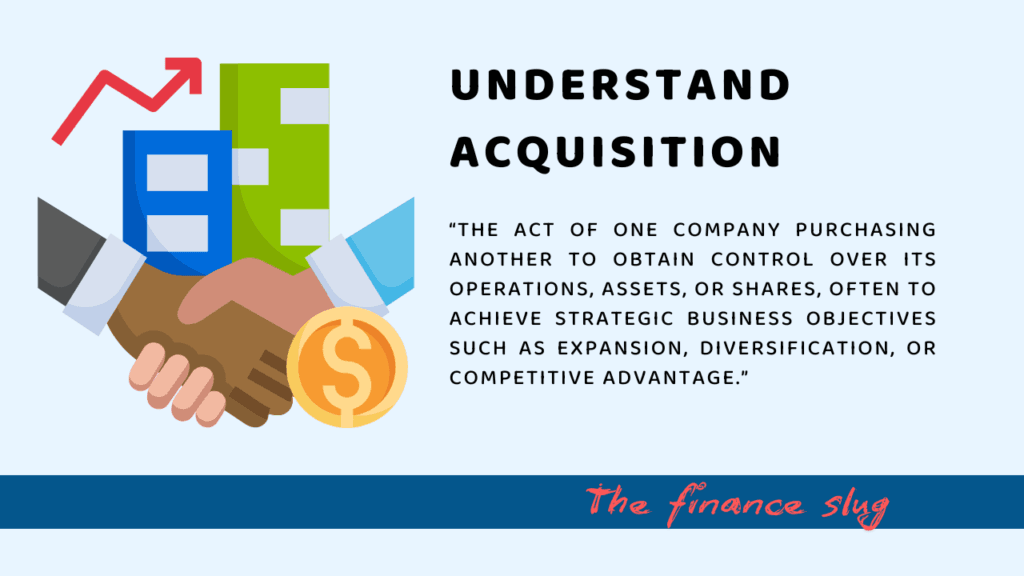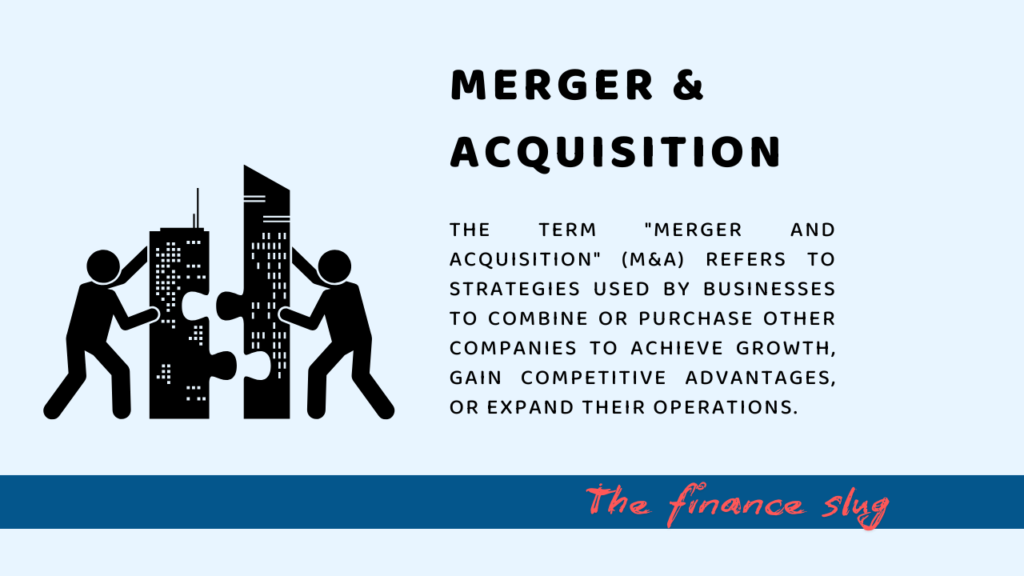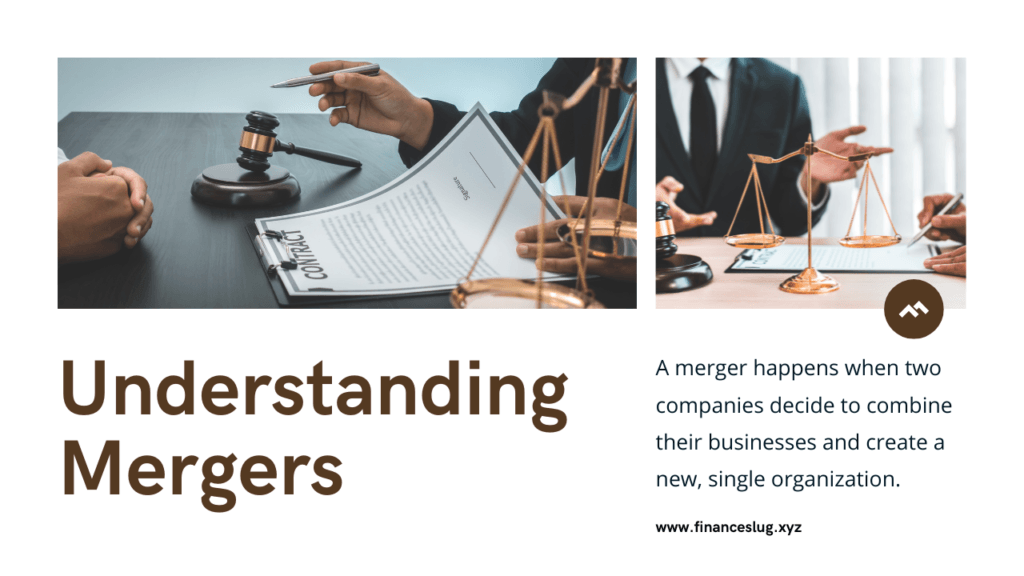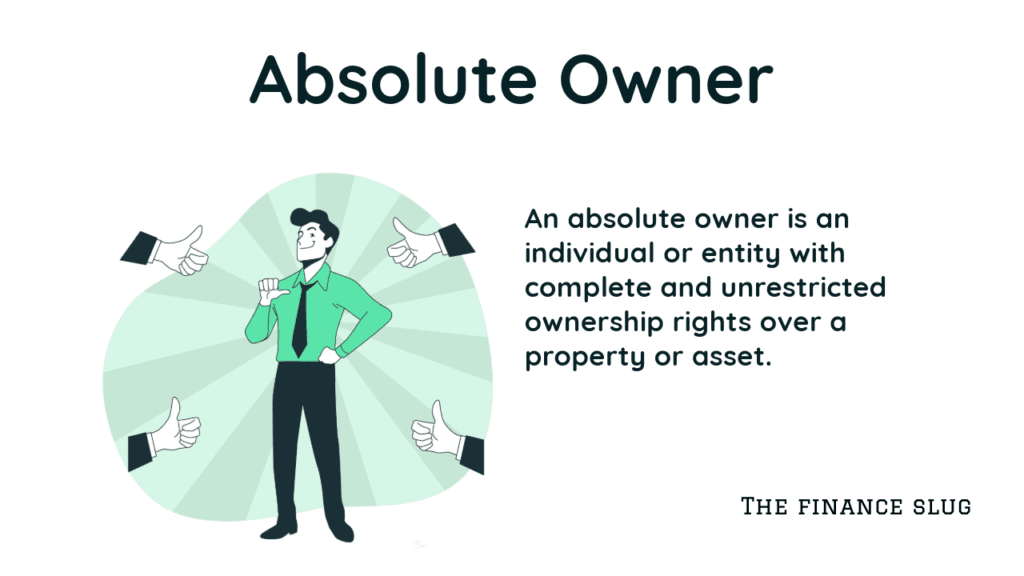
The term acquisition originates from the Latin word “acquirere,” meaning “to gain” or “to obtain.” In the business world, it signifies the act of one company gaining control over another by purchasing its shares or assets. Acquisitions have been a strategic tool for businesses since the industrial era, helping them expand, diversify, and compete on a larger scale. Over time, acquisitions have evolved into complex transactions involving detailed planning, negotiations, and integration strategies.
Acquisition Defination
“The act of one company purchasing another to obtain control over its operations, assets, or shares, often to achieve strategic business objectives such as expansion, diversification, or competitive advantage.”
Imagine you’re running a small but successful bakery in your town. Your bakery is known for its delicious cookies, and customers line up every morning to grab their favourite treats. One day, a big coffee shop chain notices your success and sees an opportunity: what if they could sell your cookies in all their cafes across the country?
Instead of competing or starting their own bakery, the coffee shop chain decides to acquire your bakery. They buy your business, take over its operations, and integrate your cookies into their menu. You, as the bakery owner, get a handsome payout and the chance to see your cookies reach customers nationwide. That’s an acquisition—a strategic move where one company takes control of another to grow, innovate, or gain an edge in the market.
Let’s dive deeper into how acquisitions work, why companies pursue them, the benefits and challenges, and how they differ from mergers.
How Does an Acquisition Happen?
The process of acquisition is like building a partnership, but with a clear goal: one company gains full control of another. Here’s how it unfolds, step by step:
Step 1: A Strategic Plan
Every acquisition begins with a purpose. The acquiring company (like the coffee shop chain in our story) identifies what it wants to achieve. For instance:
- Expanding into new markets.
- Gaining access to unique products or technologies.
- Eliminating competitors.
Step 2: Finding the Right Target
Next, the company looks for a potential business to acquire. Just as the coffee shop noticed the bakery’s popularity, big companies study the market for businesses that align with their goals. They evaluate factors like financial health, reputation, and synergy potential.
Step 3: Opening the Conversation
Once a suitable target is found, the acquiring company approaches them with an offer. This stage involves negotiations where both parties discuss the price and other details, like how the acquisition will affect employees and operations.
Step 4: Investigating the Details
Before signing any papers, the acquiring company does its homework—this is called due diligence. They dig deep into the target company’s:
- Finances (Are there any hidden debts?).
- Legal issues (Are there lawsuits or regulatory concerns?).
- Operations (Are there systems in place for smooth integration?).
Step 5: Closing the Deal
Once both sides agree, the deal is finalized. The acquiring company pays the agreed amount—whether in cash, stock, or a mix—and takes ownership of the target company.
Step 6: Blending the Teams
After the acquisition, the real work begins. The two companies must integrate their operations, employees, and cultures. For example, the bakery’s recipes might need to be standardized for mass production, and its staff may join the coffee shop’s team.
Why Do Companies Choose Acquisition?
Acquisitions are like shortcuts to success. They allow companies to grow faster than they could on their own. Here are some reasons why companies pursue them:
1. To Expand into New Markets
Imagine the coffee shop wants to reach a new city where it has no presence. By acquiring an established local cafe chain, it can instantly tap into a loyal customer base.
2. To Gain a Competitive Edge
Acquisitions eliminate competition. By buying a competitor, a company can strengthen its market position and reduce rivalry.
3. To Access Unique Resources
Sometimes, companies acquire others to gain access to valuable assets like new technology, patents, or skilled employees.
Example: When Apple acquired Beats Electronics, it didn’t just buy headphones—it gained a music-streaming platform and the expertise of its founders.
4. To Diversify Offerings
A business might acquire another in a different industry to spread risk. If one sector faces challenges, the other can still generate revenue.
5. To Achieve Cost Savings
Combining resources often leads to reduced costs. For instance, two companies can share facilities, technology, or supply chains, saving money in the long run.
What Are the Challenges of Acquisitions?
Acquisitions aren’t all smooth sailing. Just like blending two families, bringing together two companies can create conflicts. Here’s where things can get tricky:
1. Culture Clash
What if the bakery staff loves their laid-back work environment, but the coffee shop chain runs on strict schedules? These cultural differences can lead to unhappy employees and disruptions in operations.
2. High Costs
Acquisitions often require massive investments. If the expected benefits don’t materialize, the acquiring company might face financial strain.
3. Integration Problems
Blending two companies’ systems, processes, and teams is complex. Missteps can lead to delays or inefficiencies.
Example: When Daimler-Benz and Chrysler merged, cultural differences and management issues led to the partnership’s eventual failure.
4. Regulatory Hurdles
Governments may step in to review acquisitions, especially if they think it will reduce competition in the market.
5. Overestimating Benefits
Companies sometimes overestimate how much value the acquisition will bring, leading to disappointment and financial losses.
How Are Mergers and Acquisitions Different?
Mergers and acquisitions are often grouped together, but they’re not the same. Here’s how they differ:
| Aspect | Merger | Acquisition |
| Definition | Two companies join to form a new entity. | One company takes control of another. |
| Ownership | Shared between merging companies. | Full ownership is taken by the acquirer. |
| Size of Companies | Companies are often of similar size. | The acquirer is usually larger. |
| Result | A new entity is created. | The target becomes part of the acquirer. |
| Example | Exxon and Mobil merging to form ExxonMobil. | Facebook acquiring Instagram. |
Real-Life Examples of Acquisitions
Here are some famous acquisitions that shaped industries:
- Google and YouTube (2006):
Google acquired YouTube for $1.65 billion, gaining control of the world’s most popular video platform. - Amazon and Whole Foods (2017):
Amazon entered the grocery market by acquiring Whole Foods for $13.7 billion. - Disney and Pixar (2006):
Disney acquired Pixar for $7.4 billion, revolutionizing its animation capabilities.
A Final Thought
Acquisitions are like partnerships on steroids. They allow businesses to grow rapidly, expand their reach, and gain a competitive edge. But they’re not without challenges—cultural differences, financial risks, and integration issues can make or break the success of an acquisition.
The story of an acquisition isn’t just about buying another company; it’s about blending two unique identities into one stronger, more resilient entity. With careful planning and execution, acquisitions can unlock tremendous opportunities for growth and innovation.
Now that you know the story of acquisitions, keep an eye out for these transformative deals in the business world—they shape the products, services, and brands we use every day.
Learn more about Mergers & Acuisitions at Finance Slug











Pingback: Understand Why Merger and Acquisition Take Place? -